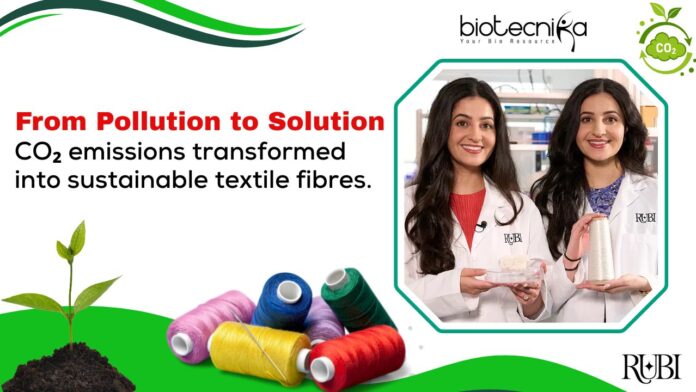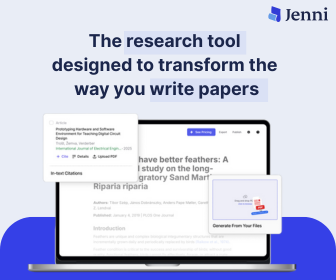Mashouf Sisters Sustainable Textiles – Spinning CO₂ into Fabric
In a world where carbon emissions threaten the planet’s future, two sisters looked to nature for a solution — and found it in the unlikeliest places: the air we breathe. Growing up amid the redwoods and entrepreneurial buzz of California’s Bay Area, Neeka and Leila Mashouf spent their childhoods enchanted by Science and driven by purpose. What began as teenage experiments in university labs has become a breakthrough innovation that could change how the world makes clothes.
At just 28, the Mashouf twins are using cutting-edge enzyme technology to turn CO₂ — the same gas fueling climate change — into soft, wearable fibres. Through their startup, Rubi, they’ve created a process that mimics how trees pull carbon from the atmosphere to grow. Only now, that natural magic is happening inside a lab — and it’s producing sustainable fabrics ready for the fashion industry and beyond.
Reinventing Carbon with Enzymatic Precision
Each year, the textile industry adds billions of tonnes of CO₂ to the atmosphere. Determined to tackle this, Neeka and Leila developed a proprietary enzymatic system that transforms carbon dioxide into biodegradable cellulose — the same organic material plants use to build themselves. This cellulose can then be turned into yarns and fabrics, offering a clean, planet-friendly alternative to traditional textiles.
“Our invention uses a special sequence of enzymes — nature’s chemical engineers — to convert CO₂ into long, fibrous polymers,” explains Neeka.
“We designed this system to address what we believe is one of the most urgent global challenges: climate change.”
Unlike traditional Carbon conversion methods that rely on fermentation or high-heat processes, Rubi’s enzymes operate under ambient conditions, consuming up to ten times less energy. The result shows a low-impact, scalable system that integrates seamlessly into the existing textile supply chain, allowing brands to reduce emissions without overhauling operations.
The company is already piloting its materials with Walmart, Patagonia, and H&M, demonstrating a market-ready application that could transform not just fashion but multiple industries reliant on cellulose-derived products.
A Vision Rooted in Science and Sustainability
Raised in a region known for both its natural beauty and startup culture, the Mashouf sisters were surrounded by curiosity and innovation from a young age. By 15, they were already contributing to academic research. Neeka pursued studies in materials Science and Business, while Leila earned a medical degree from Harvard, focusing on Bioengineering and Enzyme design.
In 2021, their shared vision came to life in the form of Rubi — a company built on the belief that manufacturing can and must coexist with environmental stewardship. “At its core, Rubi is creating a new paradigm where manufacturing can thrive while preserving natural resources and advancing climate goals,”. Leila explains, adding that, at a basic level, the enzymes are “like a little Pacman”, they eat molecules and spit them out into something a little bit different,” she describes.
Their work has not gone unnoticed. In 2025, the European Patent Office named them among the Tomorrow Shapers in its Young Inventors Prize, recognizing their contribution to climate-conscious innovation.
Beyond Fashion: A New Frontier for Carbon Use
While textiles are the starting point, Rubi’s carbon-derived cellulose has applications that stretch much further, from packaging and cosmetics to food ingredients and even construction materials. The potential impact of this technology spans multiple industries that traditionally rely on carbon-heavy processes. Through licensing, Rubi aims to empower manufacturers worldwide to adopt this greener approach, accelerating the shift toward a circular, climate-positive economy.
“We’ve shown that CO₂ doesn’t have to be a pollutant — it can be a resource,” says Neeka. “And we’re just getting started.”
A Future Woven with Possibility
The Mashouf sisters’ journey is a powerful reminder that the world’s biggest problems often hold the seed of their own solutions. By reimagining Carbon Dioxide not as a waste but as a raw material for progress, they are showing us a future where industry and the environment can thrive together.
Their research and innovation proves that with bold ideas, scientific passion as well as a commitment to sustainability, we can build a world where fashions doesn’t cost the Earth and where every molecule of carbon captured is a step toward healing the planet.
In their hands, climate action isn’t just possible — it’s already happening. And it offers hope that a cleaner, more creative future is not just within reach, but already unfolding.
Mashouf Sisters Sustainable Textiles – Spinning CO₂ into Fabric























